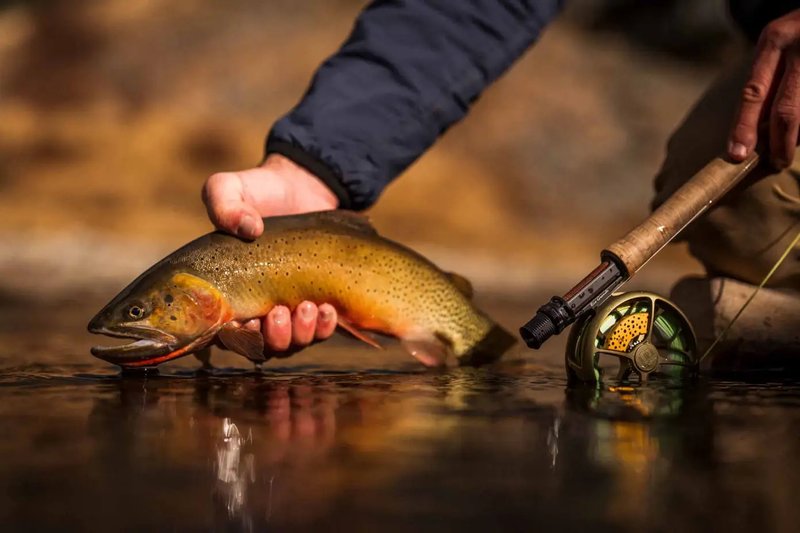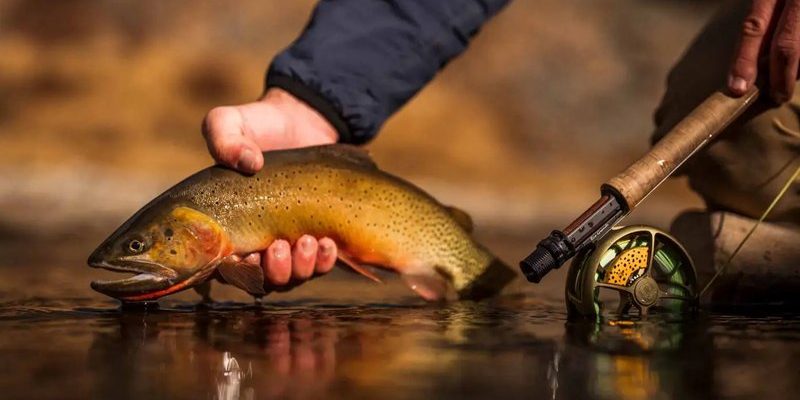
Imagine your favorite café slowly running out of coffee beans. It would be a huge loss, right? Similarly, our waters are losing one of their most iconic inhabitants. But don’t fret! Conservation efforts are underway, and there’s a lot to share about what’s being done to protect these beautiful fish. So grab a cup of your favorite brew, and let’s explore the current state of trout populations and the steps being taken to conserve them.
Understanding Trout Species and Their Habitats
Trout belong to the family Salmonidae, which includes several species such as the rainbow trout, brown trout, and brook trout. Each of these species has unique needs when it comes to habitat. For instance, brook trout thrive in cold, clean streams, while rainbow trout can adapt to various environments. These differences make it essential to understand their specific habitats to assess their endangerment status.
You might be surprised to learn that habitat loss is one of the primary threats to trout populations. Urban development, pollution, and climate change are all factors contributing to the degradation of their natural environments. For example, warm temperatures from climate change can reduce oxygen levels in water, making it difficult for trout to survive.
Another significant threat is overfishing. While trout are popular targets for recreational fishing, certain practices can diminish their numbers. Sustainable fishing practices are crucial to maintaining healthy trout populations, ensuring that we have these fish around for generations to come.
Current Status of Trout Populations
So, are trouts endangered? Here’s the scoop: not all trout species are classified as endangered, but several are at risk. The U.S. Fish and Wildlife Service lists some trout species, like the native cutthroat trout, as threatened. It’s important to realize that the conservation status can vary significantly depending on the region and specific species.
For example, the native Lahontan cutthroat trout, once nearly wiped out, has made a comeback thanks to dedicated conservation efforts. On the flip side, certain populations of rainbow trout are struggling due to habitat loss and hybridization with other trout species. It’s a mixed bag, to say the least.
What makes this situation even more complex is the role of non-native species. When non-native trout are introduced into ecosystems, they often compete with native species for food and space, creating a ripple effect that impacts the entire aquatic community.
Conservation Efforts and Success Stories
It’s not all doom and gloom in the trout world! Many organizations and agencies are actively working to protect and restore trout populations. One notable example is the Trout Unlimited program. This organization focuses on habitat restoration, promoting sustainable fishing practices, and advocating for policies that benefit trout and their ecosystems.
You might have heard about projects where fish ladders or tunnels are built to help trout navigate around barriers like dams. These efforts are crucial for allowing trout to migrate and spawn, which is essential for maintaining healthy populations. In some places, these initiatives have led to remarkable recoveries in local trout populations.
Also, community involvement plays a significant role in conservation. Many local groups host clean-up events and educational programs to spread awareness about the importance of healthy waterways. These efforts emphasize that everyone can contribute to the cause, even if it’s just through responsible fishing practices or keeping our rivers clean.
How Climate Change Impacts Trout
You might be wondering about the relationship between climate change and trout survival. Let me explain: as temperatures rise, water temperatures in rivers and lakes increase, which can be a huge problem for trout that prefer cool water. Warmer water holds less oxygen, and this can lead to stress and decreased survival rates for fish.
Additionally, climate change can alter precipitation patterns, leading to either excessive flooding or droughts. These fluctuations can negatively affect trout habitats by destroying spawning grounds or changing the water flow patterns they rely on.
The science community is working hard to understand how to mitigate these impacts. For example, planting trees along stream banks can help provide shade, keeping the water cooler. By advocating for actions that reduce greenhouse gas emissions, we can protect these fish from the worst impacts of climate change.
The Role of Anglers in Conservation
If you love fishing, you play a critical role in trout conservation, even if you might not realize it. Responsible anglers can contribute positively by practicing catch and release techniques. By releasing fish back into the water after catching them, you can help maintain healthy populations.
Additionally, understanding fishing regulations is crucial. Each region has specific rules aimed at preserving trout species, such as limits on the number of fish you can catch or restrictions on certain fishing gear. Following these guidelines is essential for promoting sustainable fishing practices.
You might also consider participating in local conservation efforts, such as volunteering for habitat restoration projects or clean water initiatives. Many organizations welcome help from anglers who are passionate about protecting their favorite fishing spots.
Future Outlook for Trout Populations
The future of trout populations largely depends on our willingness to prioritize conservation efforts. As we’ve discussed, many trout species are under threat due to environmental changes, habitat loss, and overfishing. However, the combined efforts of governments, organizations, and communities show promise.
Innovative approaches, like introducing native species to restore balance in ecosystems and improving water quality through pollution reduction initiatives, are gaining traction. With the right commitment, we can support sustainable practices that allow trout to thrive.
Education is essential. By spreading awareness about the challenges that trout face, we can inspire more people to take action. The more we know, the better equipped we are to make a difference.
In conclusion, the question of whether trouts are endangered is complex but essential to understand. While some species face significant threats, concerted conservation efforts are making strides toward recovery. By supporting sustainable practices, advocating for clean water, and promoting education, we can all contribute to the survival of these beautiful fish. Like that favorite café running out of coffee, we don’t want to see our trout populations dwindle. Together, let’s ensure that trout continue to swim gracefully in our waters for years to come.

